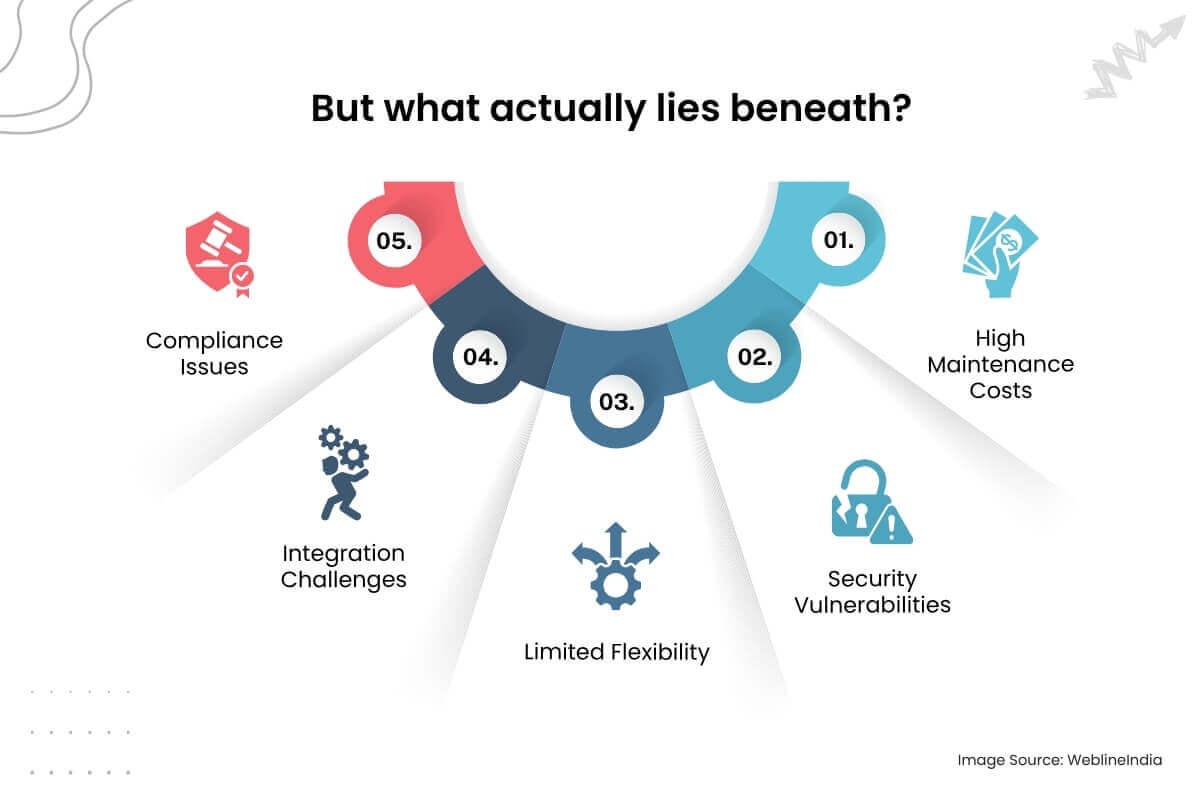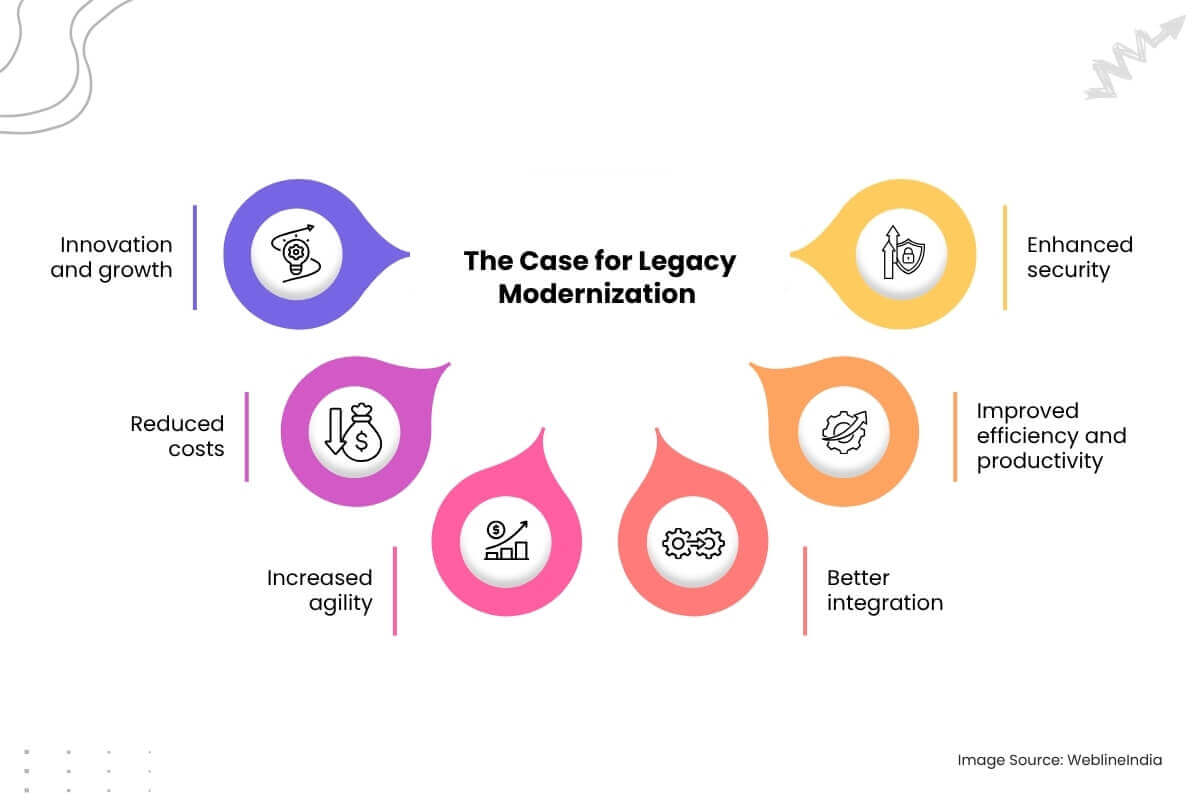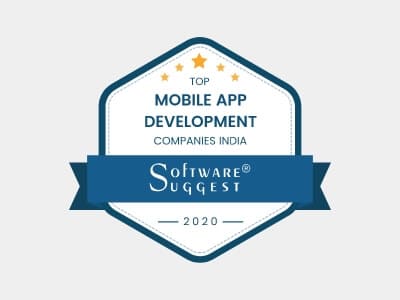The term “legacy systems” often evokes images of clunky, outdated technology, cobbled together with duct tape and prayers. While this might be true in some cases, it’s not the whole story. In reality, legacy systems are simply information systems that, while potentially based on older technology, remain critical to an organization’s day-to-day operations.
In other words,
The question is: are these aging workhorses truly worth the cost of upkeep? Or is legacy modernization the only way forward?
Let’s learn in this comprehensive article. The basics first.
Is your legacy system holding back your business growth and profits?
What are Legacy Systems?
Legacy systems refer to older technologies, including software development applications and hardware, that were once state-of-the-art but are now outdated. These systems have been in use for many years and are often deeply embedded in an organization’s operations. While they may continue to function, legacy IT systems can lack the speed, security, and flexibility of modern technologies. Despite their age, many companies hesitate to replace them due to the complexity, cost, and perceived reliability of these systems.
The Issue of – It’s okay, Let’s work with what we have
Many businesses cling to their legacy systems for seemingly good reasons:
- They work (for now): These systems have been running the show for years, perhaps decades. They’re familiar, and they get the job done.
- Fear of the unknown: Modernizing legacy systems can seem daunting. There’s a fear of disrupting operations, losing data, or facing unforeseen compatibility issues.
- Perceived high cost of modernization: Replacing entire systems can be expensive. The initial investment in legacy app modernization might seem prohibitive, especially in the face of other pressing budget demands.
However, this “if it ain’t broke, don’t fix it” mentality can be a trap, masking the true cost of maintaining legacy IT systems.
But What Actually Lies Beneath?
While legacy systems may have served businesses well in the past, maintaining them can present several challenges:

- High Maintenance Costs: As legacy systems age, the cost to maintain them increases. Finding skilled professionals to manage outdated systems becomes difficult, and the hardware and software components may be hard to replace or upgrade.
- Security Vulnerabilities: Older systems often lack the latest security patches and updates, leaving them vulnerable to cyberattacks. Legacy IT systems may also fail to meet modern security standards, putting sensitive business data at risk.
- Limited Flexibility: Legacy systems were not built with modern business needs in mind. They are typically inflexible and difficult to scale, which can hinder growth and innovation.
- Integration Challenges: Integrating legacy systems with newer technologies can be a major obstacle. As organizations adopt modern tools, legacy systems often struggle to connect and share data with them, leading to inefficiencies.
- Compliance Issues: Regulatory requirements change over time, and legacy systems may not meet current industry standards, exposing businesses to potential fines or legal issues.
You may think of whether the legacy modernization is worth the cost.
While legacy modernization has clear benefits, businesses must consider several factors before deciding whether it’s the right choice:
- Cost vs. Benefit: Modernizing legacy systems is not always cheap. Businesses should assess whether the potential benefits outweigh the costs, especially for systems that are still performing adequately.
- Business Needs: The need for legacy modernization depends on the business’s goals. If a company is growing or needs to adapt to changing market conditions, modernization can provide a significant competitive advantage. For stable businesses, it might make sense to continue using legacy systems until the need for change becomes more urgent.
- Time and Resources: Legacy modernization can be a time-consuming and resource-intensive process. Organizations must ensure they have the necessary personnel, time, and budget to undertake such a project.
- Risk Management: For industries where security and compliance are critical, the risks associated with maintaining legacy IT systems may outweigh the benefits. In these cases, legacy modernization should be prioritized to minimize vulnerabilities.
Making the Case for Modernization
Convincing stakeholders to invest in legacy modernization can be a challenge. Here are some tips:
- Focus on the business value: Highlight how modernizing legacy systems can improve efficiency, reduce costs, enhance security, and drive innovation.
- Quantify the costs of inaction: Calculate the costs of maintaining legacy systems, including maintenance, security risks, lost productivity, and compliance issues.
- Present a clear roadmap: Develop a clear and comprehensive plan for legacy modernization, including timelines, budgets, and risk mitigation strategies.
- Start small: Consider starting with a pilot project to demonstrate the benefits of legacy modernization before undertaking a full-scale transformation.
- Partner with experts: Engage with experienced technology partners who can provide guidance and support throughout the modernization process.
Ready to reduce costs by upgrading your outdated software today?
Misconceptions about Modernization Outcomes
When businesses consider modernization, certain misconceptions can cloud their decision-making process. These misunderstandings often lead to unrealistic expectations or unnecessary hesitation, ultimately affecting the success of their modernization efforts. Let’s debunk some common myths about modernization outcomes and clarify what it truly entails.
1. Modernization Is a One-Time Initiative
The Misconception: Many believe that modernization is a one-and-done effort that will future-proof systems indefinitely.
The Reality: Modernization is an ongoing process. Technologies and business needs evolve continuously, so regular updates and incremental modernization strategies are essential for maintaining relevance and efficiency. Businesses should view modernization as a journey, not a destination, with a clear roadmap aligned with their long-term vision.
2. Modernization Automatically Includes Cloud Migration
The Misconception: Modernization always involves moving systems to the cloud.
The Reality: While cloud migration is a common aspect of modernization, it’s not a default outcome. Depending on the organization’s goals, modernization might focus on improving on-premises infrastructure, adopting a hybrid model, or encapsulating legacy systems with modern interfaces. The key is aligning the approach with your business vision and operational priorities, rather than forcing a lift-and-shift approach unnecessarily.
3. Modernization Guarantees Immediate ROI
The Misconception: Upgrading systems will instantly yield financial returns.
The Reality: Modernization is an investment in long-term business agility, efficiency, and innovation. While benefits like improved productivity, reduced maintenance costs, and enhanced digital customer experience will materialize, the return on investment (ROI) depends on the scale, complexity, and implementation timeline of the modernization plan.
4. Modernization Hinders Business Continuity
The Misconception: Modernizing legacy systems will disrupt day-to-day operations and create downtime.
The Reality: With proper planning and execution, businesses can achieve modernization without major disruptions. Approaches like incremental modernization or rehosting allow companies to modernize in phases, ensuring business continuity and minimizing risks.
5. Modernization Eliminates All Legacy Constraints
The Misconception: A modernized system will completely remove all limitations associated with legacy systems.
The Reality: While modernization addresses many issues, such as performance bottlenecks, security vulnerabilities, and integration challenges, its success depends on a well-thought-out modernization plan. Rushed or poorly planned initiatives might fail to deliver the expected outcomes, especially if they rely on outdated methodologies like the waterfall methodology rather than agile strategies.
6. Modernization Is Only About Technology
The Misconception: Modernization is solely a technical upgrade.
The Reality: True modernization goes beyond technology. It involves reshaping business processes, enhancing digital customer experiences, and enabling rapid innovation. A successful modernization strategy aligns with the company’s business vision and goals, ensuring both technological and operational advancements.
The Case for Legacy Modernization
While the initial investment in legacy modernization might seem steep, it’s often a wise long-term strategy. Here’s why:

- Enhanced security: Modern systems are built with the latest security features, protecting your data and your reputation.
- Improved efficiency and productivity: Modern applications are designed for speed, efficiency, and user-friendliness. This can boost employee productivity, streamline workflows, and improve customer satisfaction.
- Better integration: Modern systems are designed to integrate seamlessly with other applications and data sources. This breaks down data silos, enables automation, and provides a holistic view of your business.
- Increased agility: Modern systems are more flexible and adaptable, allowing you to respond quickly to changing market conditions and customer demands.
- Reduced costs: While the initial investment in legacy modernization can be significant, it can lead to long-term cost savings through reduced maintenance, improved efficiency, and fewer security breaches.
- Innovation and growth: Modernizing legacy systems can unlock opportunities for innovation and growth. It can enable you to adopt new business models, leverage emerging technologies like AI and cloud computing, and stay ahead of the competition.
So, what’s next?
The Approaches to the Legacy Systems
Legacy modernization isn’t a one-size-fits-all solution. There are several approaches, each with its own pros and cons:
- Rip and replace: This involves completely replacing the legacy system with a new, modern solution. It’s the most drastic approach, but it can be the most effective in the long run.
- Encapsulation: This involves wrapping the legacy system with a modern interface, allowing it to interact with newer technologies. It’s a less disruptive approach, but it might not address all underlying issues.
- Rehosting: This involves moving the legacy system to a new platform, such as the cloud. It can improve accessibility and scalability, but it doesn’t necessarily address the underlying code.
- Refactoring: This involves restructuring and optimizing the code of the legacy system to improve its performance and maintainability. It’s a more complex approach, but it can extend the life of the system.
- Re-platforming: This involves moving the legacy system to a new platform with minimal changes to the code. It’s a less disruptive approach than rip and replace, and it can offer some improvements in performance and scalability.
The best approach for your organization will depend on your specific needs, budget, and risk tolerance.
Ready for Legacy System Revamp?
The myth that legacy systems are cost-effective and reliable in the long term is increasingly being challenged. While these systems have served businesses well, their limitations in terms of maintenance, security, and flexibility make them difficult to justify in the modern digital landscape. Legacy modernization presents a solution to these challenges, offering businesses the chance to upgrade their systems without starting from scratch.
For businesses looking to embrace legacy modernization, WeblineIndia provides expert digital transformation services tailored to your needs. With extensive experience in modernizing legacy systems, WeblineIndia offers comprehensive solutions, from legacy app modernization to full-scale system upgrades. By partnering with WeblineIndia, organizations can modernize their infrastructure, improve security, and stay competitive in an ever-evolving technological landscape.
Don’t let outdated systems hold your business back — explore how WeblineIndia can help you transition to a more secure, scalable, and efficient future.
Social Hashtags
#LegacySystems #LegacyModernization #BusinessGrowth #TechUpgrades #SoftwareModernization #OutdatedSystems #DigitalSolutions #WeblineIndia #LegacyIT #TechModernization #SoftwareUpgrades
Wondering how outsourcing can solve your legacy system challenges easily?
Frequently Asked Questions
Testimonials: Hear It Straight From Our Global Clients
Our development processes delivers dynamic solutions to tackle business challenges, optimize costs, and drive digital transformation. Expert-backed solutions enhance client retention and online presence, with proven success stories highlighting real-world problem-solving through innovative applications. Our esteemed Worldwide clients just experienced it.
Awards and Recognitions
While delighted clients are our greatest motivation, industry recognition holds significant value. WeblineIndia has consistently led in technology, with awards and accolades reaffirming our excellence.

OA500 Global Outsourcing Firms 2025, by Outsource Accelerator

Top Software Development Company, by GoodFirms

BEST FINTECH PRODUCT SOLUTION COMPANY - 2022, by GESIA

Awarded as - TOP APP DEVELOPMENT COMPANY IN INDIA of the YEAR 2020, by SoftwareSuggest